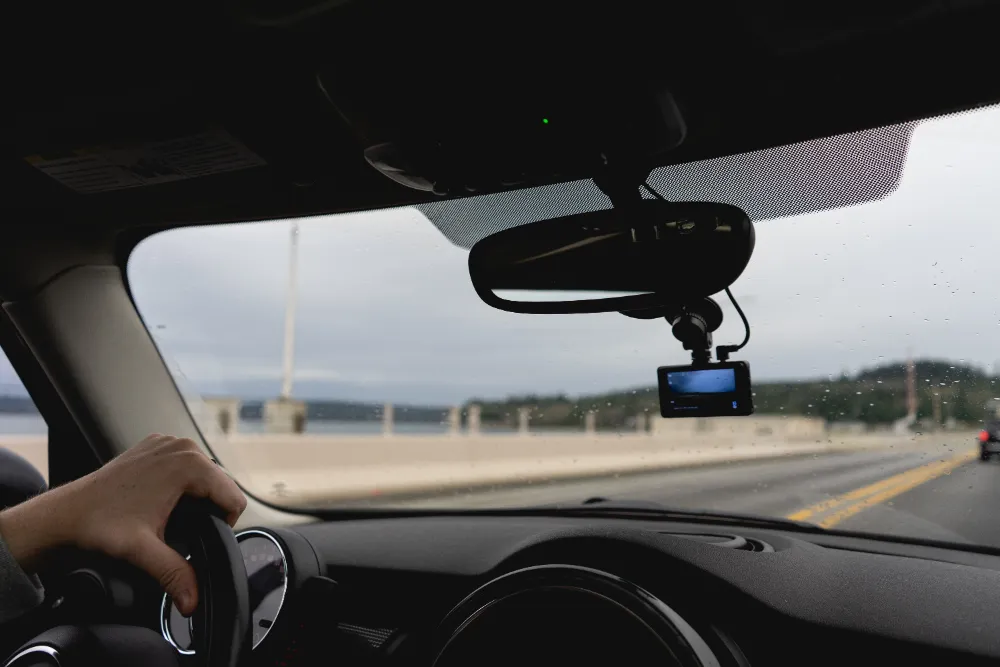-
Table of Contents
“Dash Cam Installation: Get the Right Device for Your Needs!”
Introduction
Dash cam installation is becoming increasingly popular as a way to protect yourself and your vehicle. Dash cams are small cameras that are mounted on the dashboard of your car and record video footage of your driving. They can be used to provide evidence in the event of an accident, or to monitor your driving habits. There are a variety of different types of dash cams available, each with its own features and benefits. In this article, we will discuss the different types of dash cams and how to choose the right one for your needs. We will also provide some tips on how to install a dash cam in your vehicle.
How to Choose the Right Dash Cam for Your Vehicle
When it comes to choosing the right dash cam for your vehicle, there are a few important factors to consider. Dash cams are becoming increasingly popular as a way to provide evidence in the event of an accident or other incident. They can also be used to monitor your vehicle’s performance and provide a record of your travels.
The first factor to consider is the type of dash cam you need. There are two main types: single-lens and dual-lens. Single-lens dash cams are typically less expensive and provide a single view of the road ahead. Dual-lens dash cams provide a wider view of the road and can be used to record both the front and rear of the vehicle.
The next factor to consider is the resolution of the camera. Higher resolution cameras provide better image quality and can capture more detail. However, higher resolution cameras also require more storage space and may be more expensive.
The third factor to consider is the field of view. Dash cams typically have a wide field of view, allowing them to capture more of the road. However, some dash cams have a narrower field of view, which can be beneficial if you want to focus on a specific area.
Finally, consider the features of the dash cam. Some dash cams have additional features such as GPS tracking, motion detection, and night vision. These features can be useful for monitoring your vehicle’s performance or providing evidence in the event of an accident.
By considering these factors, you can choose the right dash cam for your vehicle. Dash cams can provide valuable evidence and peace of mind, so it’s important to choose the right one for your needs.
The Benefits of Installing a Dash Cam in Your Vehicle

The installation of a dash cam in a vehicle can provide a number of benefits to the driver. Dash cams are small cameras that are mounted on the dashboard of a vehicle and record video footage of the road ahead. This footage can be used for a variety of purposes, including providing evidence in the event of an accident or dispute.
The first benefit of installing a dash cam in a vehicle is that it can provide evidence in the event of an accident or dispute. Dash cams record video footage of the road ahead, which can be used to prove who was at fault in the event of an accident. This footage can also be used to dispute any false claims made against the driver.
The second benefit of installing a dash cam in a vehicle is that it can provide peace of mind. Dash cams can act as a deterrent to potential criminals, as they know that their actions are being recorded. This can provide the driver with a sense of security and peace of mind when driving.
The third benefit of installing a dash cam in a vehicle is that it can provide a record of the journey. Dash cams can record the entire journey, which can be useful for tracking the route taken and for providing evidence in the event of a dispute.
In conclusion, installing a dash cam in a vehicle can provide a number of benefits to the driver. Dash cams can provide evidence in the event of an accident or dispute, provide peace of mind, and provide a record of the journey. For these reasons, installing a dash cam in a vehicle is a wise decision.
The Pros and Cons of Dash Cam Installation
Dash cams are becoming increasingly popular as a way to protect drivers from false accusations and to provide evidence in the event of an accident. While there are many benefits to installing a dash cam, there are also some potential drawbacks. This article will explore the pros and cons of dash cam installation.
Pros
The primary benefit of installing a dash cam is that it can provide evidence in the event of an accident. Dash cams can record the events leading up to an accident, which can be used to prove who was at fault. This can be especially helpful in cases where the other driver is trying to blame you for the accident.
Dash cams can also be used to protect drivers from false accusations. If someone makes a false claim against you, the dash cam footage can be used to prove your innocence.
Finally, dash cams can be used to monitor your driving habits. This can be helpful for those who are trying to improve their driving skills or for parents who want to keep an eye on their teenage drivers.
Cons
One potential downside of installing a dash cam is the cost. Dash cams can be expensive, and the cost of installation can add up quickly.
Another potential issue is privacy. Dash cams can record audio as well as video, which means that they can pick up conversations in the car. This can be a concern for those who value their privacy.
Finally, dash cams can be a distraction. If you are constantly checking the footage or trying to adjust the settings, it can take your focus away from the road.
In conclusion, there are both pros and cons to installing a dash cam. While they can provide valuable evidence in the event of an accident, they can also be expensive and intrusive. Ultimately, it is up to the individual to decide if the benefits outweigh the drawbacks.
Tips for Installing a Dash Cam in Your Vehicle
1. Choose a location for your dash cam. The most common place to install a dash cam is on the windshield, but you can also mount it on the dashboard or on the rearview mirror. Make sure the location you choose does not obstruct your view of the road.
2. Clean the area where you will be mounting the dash cam. Use a damp cloth to remove any dirt or dust from the surface.
3. Attach the mounting bracket to the dash cam. Make sure the bracket is securely attached to the camera.
4. Place the dash cam in the desired location. Make sure the camera is level and secure.
5. Connect the power cable to the dash cam. Plug the power cable into the cigarette lighter or power outlet in your vehicle.
6. Connect the dash cam to your vehicle’s audio system. This will allow you to hear audio from the dash cam.
7. Test the dash cam to make sure it is working properly. Make sure the camera is recording and that the audio is clear.
8. Secure the dash cam in place. Use the mounting bracket or adhesive tape to make sure the camera is secure.
9. Hide any visible wires. Use zip ties or adhesive tape to keep the wires out of sight.
10. Enjoy the peace of mind that comes with having a dash cam installed in your vehicle.
Understanding the Different Types of Dash Cam Installation Options
Dash cams are becoming increasingly popular as a way to protect yourself in the event of an accident or other incident. However, there are several different types of dash cam installation options available, and it is important to understand the differences between them in order to choose the best option for your needs.
The most common type of dash cam installation is a hardwired setup. This involves connecting the dash cam directly to the vehicle’s electrical system, usually through the fuse box. This type of installation is the most secure and reliable, as it ensures that the dash cam will always be powered on and recording. However, it can be more difficult to install and may require professional assistance.
Another option is a plug-and-play setup. This involves connecting the dash cam to the vehicle’s cigarette lighter or USB port. This type of installation is much easier to do, as it does not require any wiring or professional assistance. However, it is not as secure as a hardwired setup, as the dash cam can be easily disconnected from the power source.
Finally, there are also wireless dash cam installations. This type of installation involves connecting the dash cam to the vehicle’s Wi-Fi network. This type of installation is the easiest to do, as it does not require any wiring or professional assistance. However, it is not as secure as a hardwired setup, as the dash cam can be easily disconnected from the Wi-Fi network.
No matter which type of dash cam installation you choose, it is important to make sure that it is properly installed and that it is compatible with your vehicle. It is also important to make sure that the dash cam is properly secured to the vehicle, as an improperly installed dash cam can be easily removed or damaged.
Discover the essential steps and tips for dash cam installation tailored specifically for truckers, offering insights into how this technology enhances safety and security on the road, providing peace of mind for trucking professionals.
For more information visit local authories sites to know your rights.




